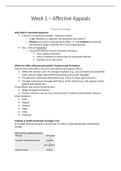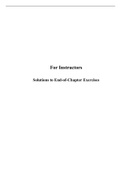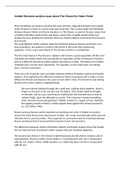Summary
Comprehensive Summary Health Communication: Week 1-7
- Module
- Institution
This very comprehensive summary combines all material for the exam of Health Communication. The summary is built up through the structure of the articles, supplemented by the most important parts from the micro lectures and tutorial groups.
[Show more]







